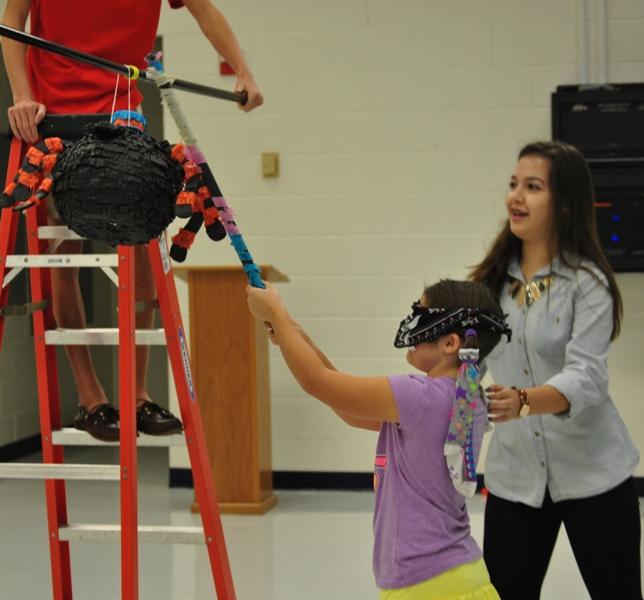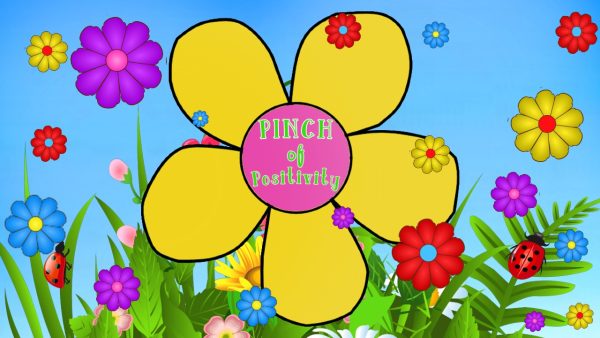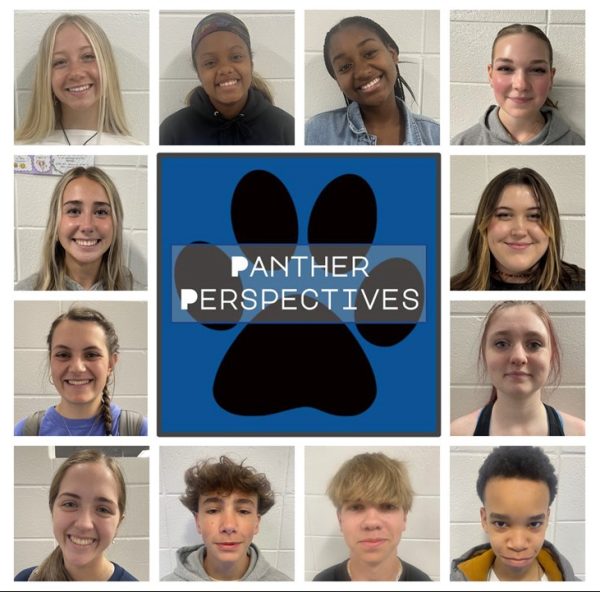Third graders ‘take a swing’ at learning Spanish
November 14, 2014
The highlight of junior Maggie Zarate’s Tuesday mornings is watching little third graders learn a new language, but this week, the students were in for a treat.
Zarate, one of the five junior and two senior National Spanish Honor Society members, tutors third graders in the cafeteria at Peeples Elementary from 7:30 to 8 a.m. Most of their sessions include singing Spanish songs and learning basic phrases and commonly used words.
Spanish III and AP Spanish teacher Madeline Rodriguez explained how the third graders were allowed into the program. “The parents received sign-up sheets at the beginning of the school year,” Rodriguez said. “If they decided to let their kids come, they have to drop them off early so we can start on time.” Peeples opens at 7:40 a.m., so the sessions have to start 10 minutes before school begins. The tutors go to their first class of the day at 8:35 a.m., so the lessons also have to end at 8 in order to give them time to prepare for their own day.
Before the sessions begin, Rodriguez and the tutors spend about five minutes setting out the coloring sheets for the day. The tutors also have to walk the students back to class when the session is over. This leaves them with about 20 minutes to give the lesson.
Tutoring sessions start with the singing of the “Buenos Días” song. Students introduce themselves and greet each other in Spanish. They learn how to say buenos dias, como estas and respond with muy bien gracias y tu?
“The girls in my group are always eager to sing the song as soon as we get to the cafeteria,” Zarate said. “They love it.”
After their introductions, students learn about the day’s topic, which is decided in a meeting every Monday before the sessions. “The students are so interested in what we have to say,” junior Garrett Prellberg said. “They are really eager to learn and catch on quickly.”
One Tuesday’s topic was la piñata and its significance in Spanish culture. Students learned that the piñatas are made of papier-maché, pottery or cloth and are filled with small toys or candy in celebration of “El Dia de Los Muertos” or “The Day of the Dead.”
“The Day of the Dead originated in Mexico and celebrates the passing of loved ones through festivities and parties instead of mourning,” Rodriguez said. “We taught the students that the piñata has historical background and is much more than just a fun toy.”
Immediately following the lesson, the students lined up in the front of the cafeteria and waited for their turn to hit a spider-shaped piñata. First in line was third grader Sophia who swung the bat as hard as she could, but the piñata didn’t budge. Each of the 18 students attempted multiple times, but to no avail and began getting restless, so Prellberg took the piñata down and tore it open, letting the candy pour onto the floor.
“Everyone tried to get the candy at one time and it was crazy,” third grader Brylee said.
After they settled down, the third graders talked about their favorite parts of the session. “Mine was the piñata because it reminded me of Call of Duty and fighting for a goal,” said Gadsen, one of the third grade boys.
Catherine, however, preferred the singing. “It’s fun to introduce myself in Spanish.”
Rodriguez, who started the program this year, said the lessons have benefits for both sets of students. She said she is really pleased with the success of the sessions taking that this is their first year trying it out. “The third graders as extremely smart,” she said. “In fact, when the tutors tried to teach the students how to count to 10, they already knew how.”
Rodriguez also said that she misses the days years ago when Spanish was an enrichment class that the elementary students went to once a week . “It feels silly for a high school student to have to go back to the basics even if they’re in another language,” Rodriguez said. “Kids are little sponges and could pick up on foreign language so much better if they start young.”
Junior Faith Terry, one of the tutors, also enjoyed the success of the lessons. “Being in the higher level Spanish classes, we have the ability to connect with the little kids through teaching them a completely new language,” she said.
The principal of Peeples, Erin Roberson, shared similar views on the success of the program. “Learning a foreign language exercises the third graders’ brains and has a positive impact on their overall language and vocabulary development,” Roberson said.
Rodriguez said one of the most fulfilling moments of the program was seeing the smiles on the third graders’ faces when they learned something new. “I’m also really proud of my kids [Spanish Honor Society members] because they got to see first-hand what it’s like to be a teacher and how crazy it gets sometimes.”









